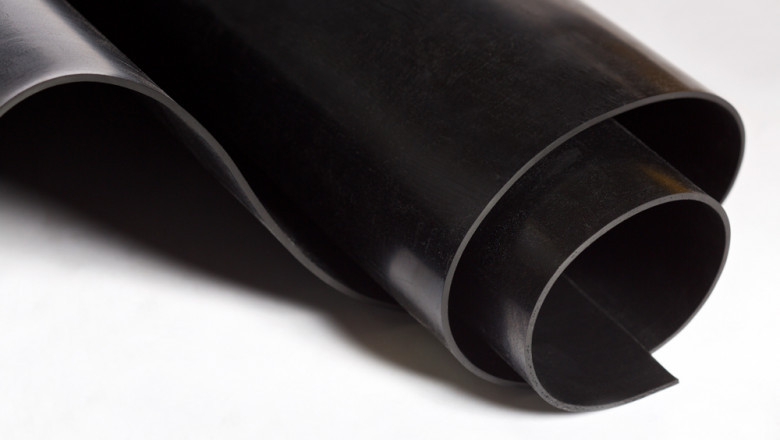views
Unlock opportunities for business development and sustained growth.
Butyl rubber is a vital synthetic elastomer widely used across various industries due to its unique properties such as excellent gas impermeability, chemical resistance, and durability. From automotive tires to pharmaceutical packaging and construction materials, butyl rubber plays an essential role in modern manufacturing. However, the market for butyl rubber is constantly evolving, influenced by a complex interplay of factors that shape its supply, demand, pricing, and growth trajectory.
In this blog, we explore the key dynamics that govern the butyl rubber market, offering insights into what drives the industry forward, what challenges it faces, and the opportunities on the horizon.
Key Drivers Shaping the Butyl Rubber Market
1. Growing Automotive Sector
The automotive industry is the largest consumer of butyl rubber, particularly for tire inner liners, tubeless tires, and other sealing applications. The global rise in vehicle production especially in emerging economies such as China, India, and Southeast Asia has been a significant driver of demand.
Furthermore, the advent of electric vehicles (EVs) is creating fresh growth avenues. EV tires require enhanced airtightness and durability to maximize energy efficiency and safety, making butyl rubber an ideal choice. Tire manufacturers are increasingly developing customized butyl rubber grades to meet the stringent requirements of EVs, further boosting demand.
2. Expansion in Healthcare and Pharmaceuticals
The pharmaceutical sector’s increasing demand for sterile, chemically inert packaging materials has driven growth in butyl rubber consumption. Butyl rubber is extensively used for vial stoppers, syringe seals, and closures due to its ability to maintain the integrity of drugs and vaccines.
With rising global healthcare spending, particularly in developing regions, and heightened focus on vaccine distribution, this sector is set to remain a strong market driver for butyl rubber.
3. Construction and Infrastructure Development
In construction, butyl rubber is favored for its water resistance, flexibility, and longevity. It is widely applied in roofing membranes, sealants, and waterproofing solutions. Government investments in infrastructure and sustainable building initiatives, especially in Asia-Pacific, continue to fuel demand.
Market Challenges and Restraints
Despite promising growth, the butyl rubber market faces several challenges that influence its overall dynamics:
1. Raw Material Price Volatility
Butyl rubber production depends on petroleum-derived feedstocks, such as isobutylene and isoprene. Fluctuations in crude oil prices directly affect production costs, leading to price volatility in the butyl rubber market. This unpredictability complicates pricing strategies and can impact profitability.
2. Environmental and Regulatory Pressures
Increasingly stringent environmental regulations worldwide impose higher compliance costs on manufacturers. Concerns around emissions, waste management, and sustainability are pushing producers to adopt cleaner, greener production methods.
Additionally, the synthetic nature of butyl rubber and challenges with recyclability create sustainability issues that may limit market growth unless addressed through innovation.
3. Competition from Alternative Elastomers
In some applications, butyl rubber faces competition from other elastomers like EPDM, nitrile rubber, and thermoplastic elastomers. These alternatives may offer cost advantages, easier processing, or better recyclability, forcing butyl rubber producers to innovate continuously.
Opportunities Driving Market Growth
Despite these challenges, several promising opportunities exist for the butyl rubber market:
1. Innovation in Specialty Butyl Rubbers
The development of halogenated butyl rubbers such as bromobutyl and chlorobutyl—has expanded the range of applications by improving curing speeds, adhesion properties, and chemical resistance. These specialty grades open doors to high-performance sectors like pharmaceuticals and advanced automotive components.
2. Electrification and Sustainability Trends
The push toward electric vehicles is likely to sustain demand for butyl rubber due to its crucial role in EV tire technology. Simultaneously, growing emphasis on sustainability is driving research into bio-based feedstocks and enhanced recyclability methods, which may reduce environmental impact and improve market acceptance.
3. Emerging Markets
Rapid industrialization, urbanization, and healthcare infrastructure development in regions such as Latin America, Africa, and Southeast Asia are creating new demand centers for butyl rubber. These emerging markets present substantial growth potential over the coming years.
Supply Chain and Market Structure
The butyl rubber market is characterized by a few key global producers, including major chemical companies and regional manufacturers. These players invest heavily in production capacity expansions and technological advancements to maintain supply reliability and meet evolving demand.
Supply chain efficiency remains critical, particularly given the sensitivity to raw material availability and geopolitical factors. Companies are increasingly focusing on localizing production closer to key end-use markets to reduce logistics risks and lead times.
Market Outlook
The butyl rubber market dynamics suggest a balanced outlook characterized by steady growth tempered by periodic volatility. Demand is expected to rise steadily, driven by automotive innovation, healthcare needs, and construction activities. However, raw material price fluctuations and environmental regulations will require ongoing strategic management.
Investments in R&D, sustainability initiatives, and diversified supply chains will be crucial for companies aiming to maintain competitiveness and capture emerging opportunities.
Conclusion
The butyl rubber market operates within a complex framework of drivers, restraints, and opportunities. Its growth is propelled by expanding applications and technological advances but challenged by price volatility, environmental concerns, and competition.
Understanding these market dynamics helps industry players and stakeholders make informed decisions to navigate challenges, leverage opportunities, and contribute to the sustainable growth of this essential material market.






















Comments
0 comment